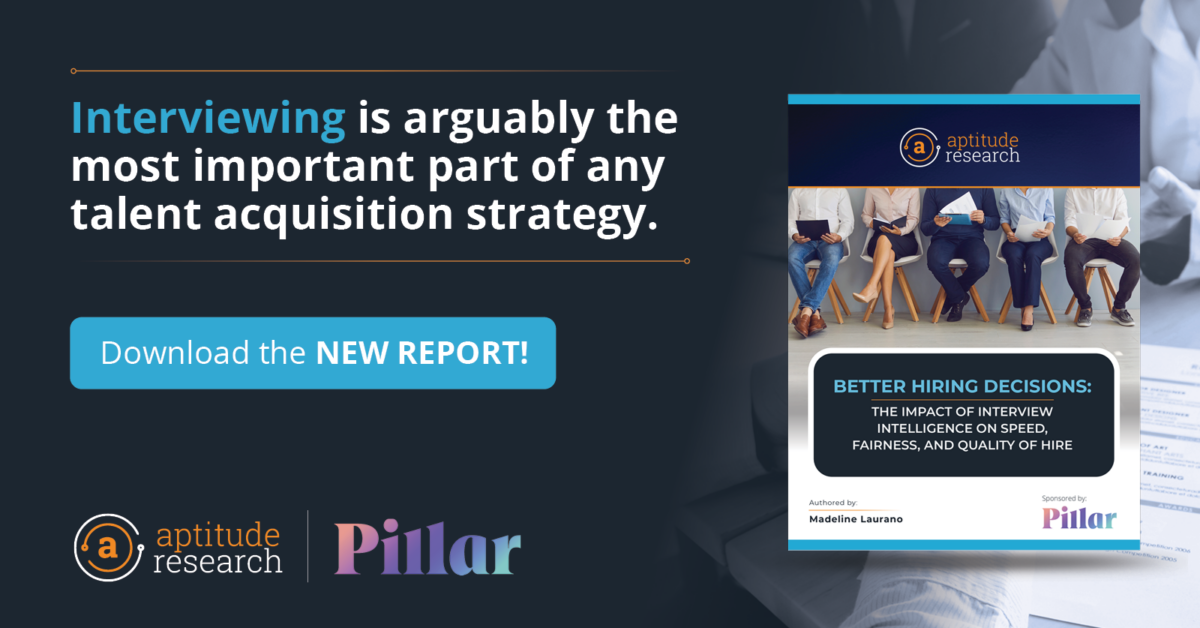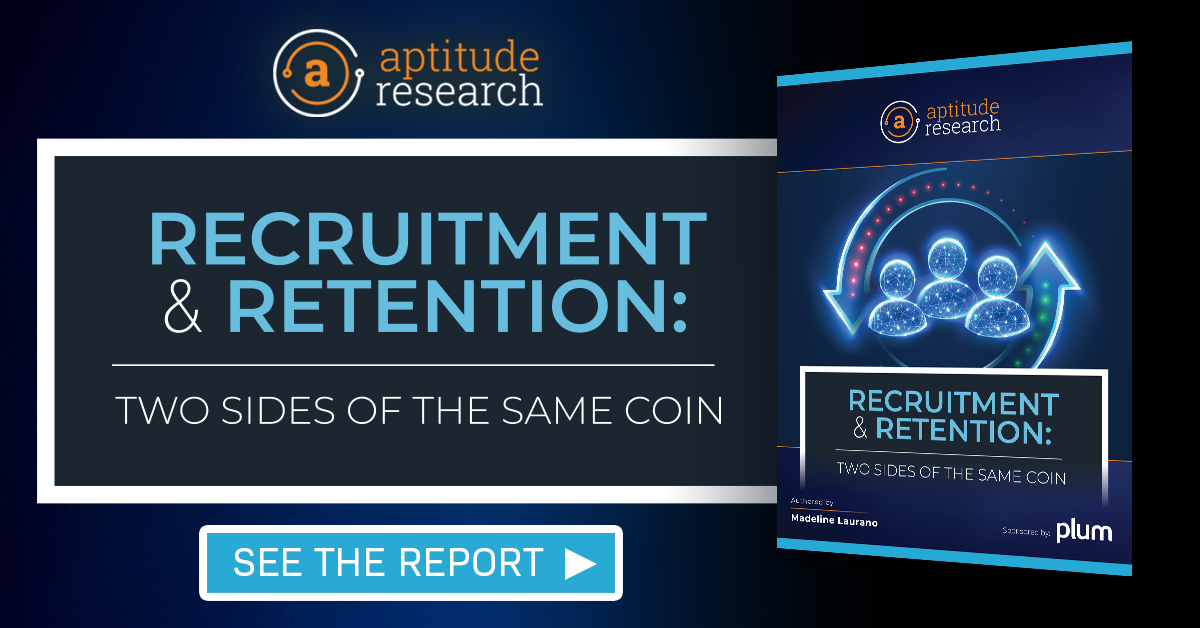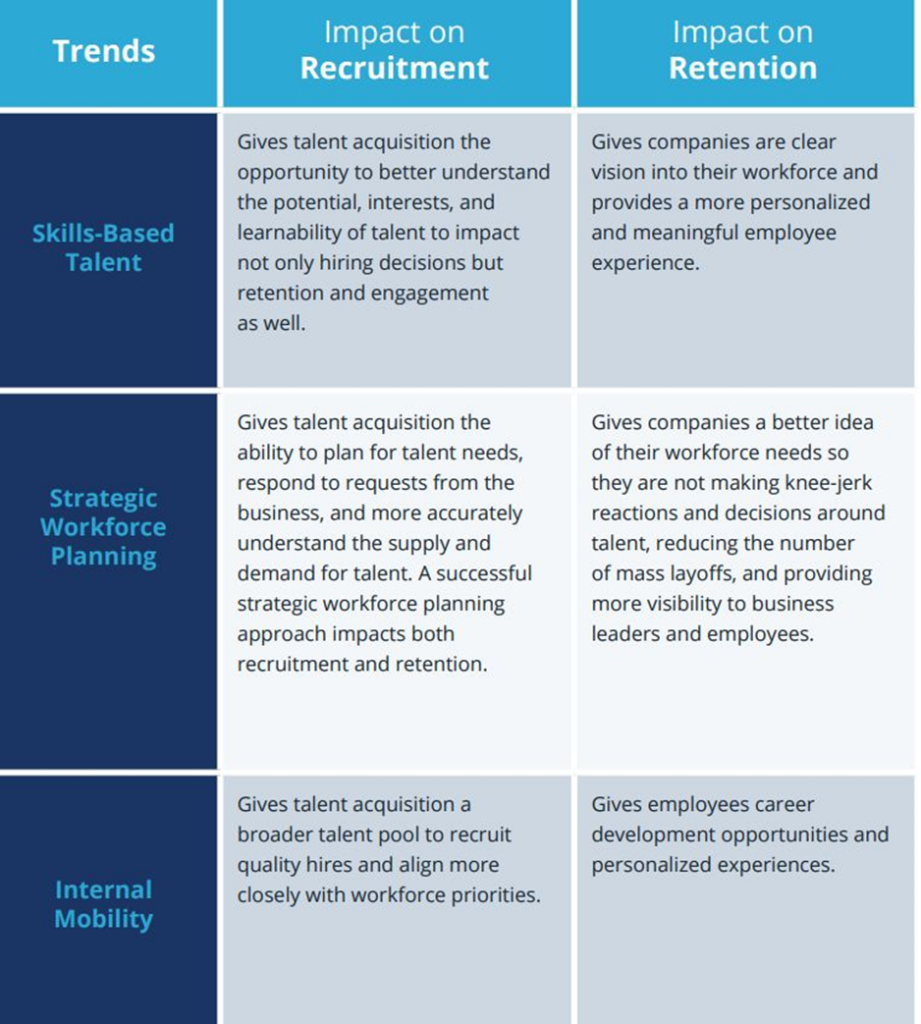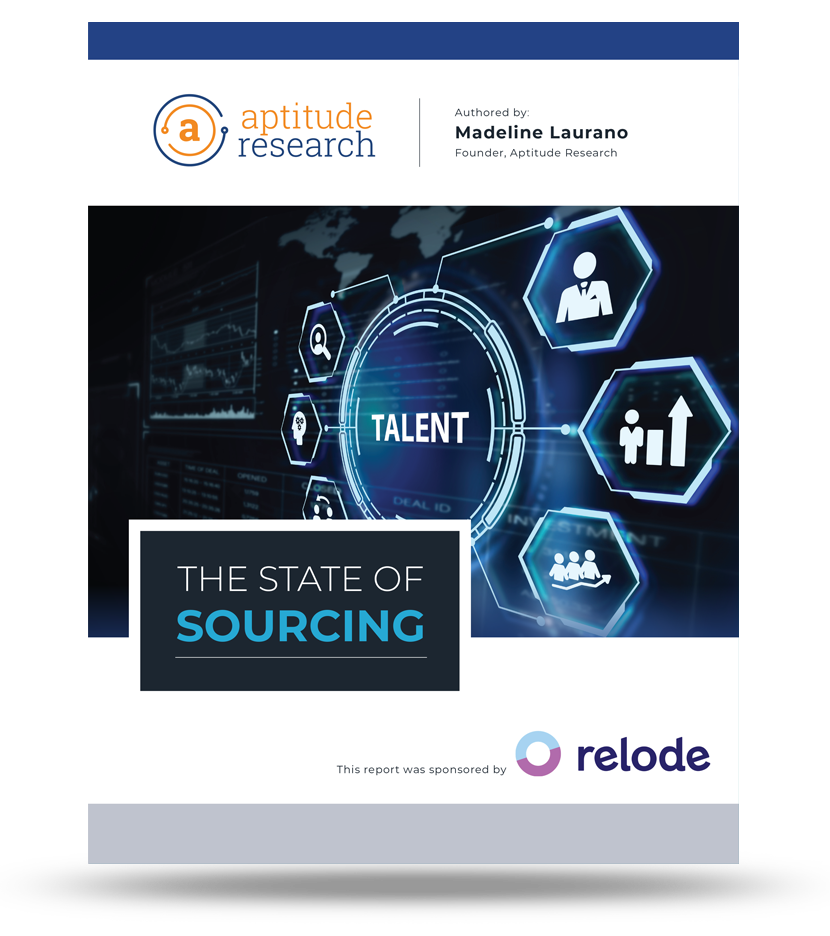One of the most popular topics at this year’s HR Tech Conference was Interview Intelligence. It came up during the Pitchfest, the TA Tech Expert panel, and was highlighted by Splunk as one of the most impactful areas of TA today. But, despite the buzz around this growing category, interviews are often neglected in favor of other investments like job advertising and recruitment marketing. Companies spend millions on advertising and ignore the interview process.
Interview Intelligence platforms offer the following capabilities:
• Interview guides: Interview guides that are dynamic and powered by AI that provide consistency and guidance through the process. Companies have the option if they want to record interviews or not.
• Interview transcription and analysis: Automated insights that identify trends, strengths, and areas for improvement.
• Interviewer performance feedback: Analysis of interviewer behavior, including bias detection and question consistency.
• Structured interview processes: Standardization that ensures fairness and comparability between candidates.
• Data-driven decision making: Summaries and key insights to help recruiters make objective, evidence-based decisions.
In our Interview Intelligence Report sponsored by Pillar, we identified several key findings that show the growing interest in this category. Here are the top 10 insights from our research:
1. 82% of Recruiters Have Lost Quality Talent Due to a Poor Interview Process
Despite their best efforts in recruitment marketing, companies are losing top candidates during the interview stage. Interview Intelligence helps prevent this by standardizing interviews and providing consistency across teams.
2. Only 19% of Hiring Managers Follow Interviewer Recommendations
Without a data-driven approach, many hiring decisions are based on gut instinct rather than structured feedback. Interview Intelligence platforms ensure decisions are made using real-time insights, improving hiring accuracy.
3. 54% of Candidates Report Experiencing Bias in the Interview Process
Bias continues to plague the interview process. With Interview Intelligence, companies can reduce unconscious bias by offering AI-driven feedback and standardized interview questions.
4. 42% of Companies Conduct 5 or More Interviews per Candidate
Long, drawn-out interview processes not only frustrate candidates but also prolong time-to-hire. Interview Intelligence helps streamline interviews, reduce redundant rounds, and speed up the hiring process.
5. Companies Using Interview Intelligence See a 67% Improvement in Turnover Reduction
Turnover is costly, and poor hiring decisions can lead to high turnover rates. Interview Intelligence helps reduce turnover by ensuring better alignment between candidates and company needs.
6. 70% of Companies Using Interview Intelligence Report Improved First-Year Performance
First-year performance is crucial for new hires. Organizations leveraging Interview Intelligence report better new hire outcomes, thanks to more informed and data-driven hiring decisions.
7. 74% of Recruiters Experience Time Savings with Interview Intelligence
Interview Intelligence automates time-consuming tasks like scheduling and note-taking, allowing recruiters to focus on more strategic aspects of hiring.
8. 68% of Companies Report Higher Quality of Hire with Interview Intelligence
The quality of hire improves when interviewers can rely on structured data and insights. Interview Intelligence ensures that hiring managers make better-informed decisions, resulting in stronger performance outcomes.
9. 64% of Companies Using Interview Intelligence Report Improved DEI Outcomes
As DEI remains a priority, Interview Intelligence helps standardize interview processes and reduce bias, leading to more diverse and inclusive hiring practices.
10. Only 16% of Companies are Recording Interviews.
Companies that can record and transcribe interviews are able to capture insights, create accountability, and make better hiring decisions. Companies using interview intelligence can start by just transcribing and add recordings.
Interview Intelligence is changing talent acquisition. These platforms integrate with exisitn ATS and work tech providers and provide deeper insights on decision-making. Companies that implement this technology see tangible improvements in turnover, first-year performance, and quality of hire. By investing in Interview Intelligence, organizations can stop relying on gut feelings and start making data-driven decisions that improve efficiency, reduce bias, and lead to better outcomes.










